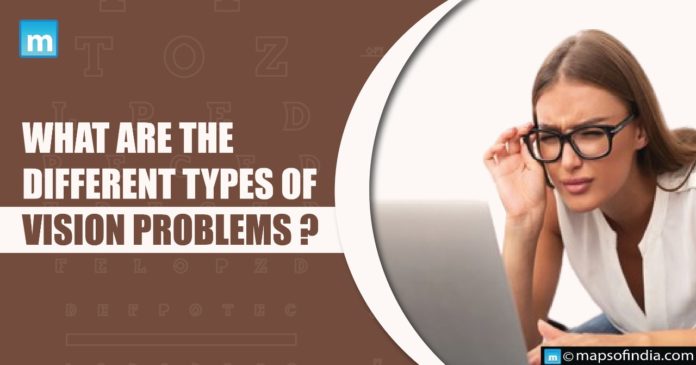People experience vision issues at some point in their lives. Some are mild and will resolve on their own, whereas others are simple to cure at home. Others require doctors’ treatment.
Listed below are vision problems:
- Eyestrain
This one is for anyone who spends hours reading, working at a computer, or driving long distances. It occurs when your eyes are overworked. Like any other part of your body, they become fatigued and need rest.
- Night Blindness
One with night blindness doesn’t have good vision at night or in dim lighting. Some people get this problem by birth, or it may form from a retina disease. Usually, night blindness can not be treated.
- Lazy Eye
It is known as lazy eye or amblyopia when one of the eyes does not grow normally. The vision in that eye is poorer, moving around “lazily” while the other eye remains still. It affects newborns, kids, and adults, and it infrequently damages both eyes at the same time. Corrective glasses or contact lenses, as well as a patch or other measures, are options for this treatment.
- Cross Eyes
When you stare at anything, your eyes may not be aligned with each other. This is known as strabismus. It’s also referred to as walleye or crossed eyes. This problem won’t go away on its own. One has to visit an eye doctor who has cross-eyes for vision therapy, which helps strengthen the weak eye muscles.
- Colourblindness
You may be colourblind if you can’t see specific colours or can’t identify the difference between them. It occurs when the colour cells in the eye are missing or aren’t functioning properly.
You can only see in grayscale when it’s bad, but that’s rare. Many people with colour blindness are born with it, but it can also be acquired later in life due to certain retina disorders. It is far more frequent in men than in women to be born with it. If you’re born with it, there’s no therapy. However, special contacts and glasses can be used to distinguish between colours.
- Uveitis
This is the name given to a class of disorders that produce uveal inflammation. This is the eye’s middle layer, which houses most of the blood vessels. Uveitis, found in all ages, can damage eye tissue and may result in vision loss. Symptoms could stay for a long time or disappear abruptly.
Pain from blurred eyesight and redness of the eyes are symptoms of this disorder.
- Presbyopia
This occurs when you lose the capacity to view near objects and tiny print while having good distance vision. To make reading easier after age 40, you may need to hold a book or other reading material farther away from your eyes.
- Dry Eyes
This occurs when your eyes are unable to produce adequate tears. It may feel as if something is in your eye or as if it is burning. Severe dryness can occasionally cause visual loss in extreme situations.
- Cataracts
These are blurry patches that appear on the eye’s lens. An eye lens that is in good health is as clear as a camera lens. It transmits light to your retina, which processes images at the rear of your eye. Light cannot easily pass through the eye, which has a cataract. At night, you may see glare or a halo surrounding lights since you can’t see either.
Cataracts usually develop gradually. It doesn’t generate any eye pain, irritation, or inflammation.
- Glaucoma
It is natural and safe to have some pressure inside the eyes. But excessive pressure can affect your optic nerve. Glaucoma is a term that describes a set of diseases that create this problem.
A primary open-angle glaucoma is a frequent form. However, the majority of those shows no initial signs of pain.




